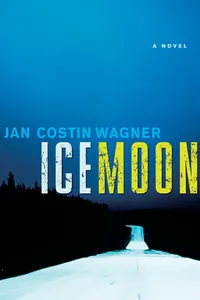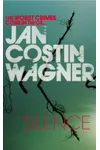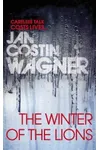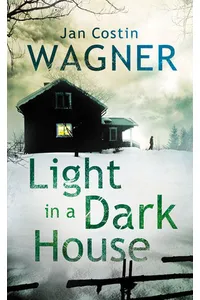Step into the hauntingly beautiful world of Detective Kimmo Joentaa, where the icy landscapes of Finland mirror the quiet grief of a detective solving crimes while mending his broken heart. Jan Costin Wagner’s Kimmo Joentaa series blends Nordic noir with deep emotional resonance, offering readers a crime saga that’s as much about the human spirit as it is about unraveling mysteries.
This German-authored series, set in the Finnish city of Turku, follows Kimmo Joentaa, a young detective whose personal loss shapes his approach to justice. With a style that’s both introspective and gripping, Wagner crafts stories that linger long after the final page.
How Detective Kimmo Joentaa Began
Jan Costin Wagner, born in Germany in 1972, found inspiration for the Kimmo Joentaa series through his Finnish wife and their time spent in Finland. A former journalist with a background in German literature and history, Wagner debuted with Nachtfahrt in 2002, but it was Ice Moon (2003, translated 2006) that introduced Kimmo Joentaa to the world. His unique perspective as a German writing Scandinavian crime fiction brought a fresh voice to the genre, blending Nordic melancholy with universal themes of loss and redemption.
Wagner’s connection to Finland’s culture and landscapes infuses the series with authenticity, while his storytelling draws comparisons to P.D. James and Jo Nesbø. The series’ emotional depth and atmospheric settings quickly earned critical acclaim, with Ice Moon winning the Marlowe Prize for Best Crime Novel.
The Heart of Detective Kimmo Joentaa
The Kimmo Joentaa series begins with Ice Moon, where Kimmo, reeling from his wife Sanna’s death from cancer, dives into a murder case involving a serial killer who kills with eerie tranquility. The novel weaves Kimmo’s grief with his investigation, creating a poignant psychological mystery. Silence (2007, translated 2010), the second book, follows Kimmo as he investigates a girl’s disappearance linked to a decades-old unsolved case, exploring guilt and unresolved pain.
The Winter of the Lions (2009, translated 2011) sees Kimmo facing a chilling Christmas case involving the murders of a pathologist and a talk-show host, delving into themes of alienation and hidden rage. Light in a Dark House (2011, translated 2013) centers on a murdered comatose woman, with Kimmo’s personal life complicating his pursuit of a killer. The series’ Finnish setting—snowy lakes, endless nights—amplifies its moody tone, while themes of grief, empathy, and the ripple effects of crime set it apart from traditional thrillers.
Wagner’s style is contemplative, focusing on the emotional toll of crime on victims, families, and even perpetrators. Unlike action-packed procedurals, these novels offer a meditative pace, inviting readers to connect with Kimmo’s introspective nature and the richly drawn characters around him.
Why Detective Kimmo Joentaa Resonates
The Kimmo Joentaa series has carved a niche in Nordic noir for its emotional authenticity and literary depth. Fans praise its sensitive portrayal of grief, with Kimmo’s journey resonating with those who’ve faced loss. The 2010 film adaptation of Silence, titled Das letzte Schweigen, brought Wagner’s work to a wider audience, cementing its cultural impact. The series’ blend of Scandinavian atmosphere and universal human struggles makes it a standout, appealing to readers seeking more than just a whodunit.
Though less mainstream than Wallander or Harry Hole, Kimmo Joentaa’s story offers a quiet power, proving that crime fiction can be both thrilling and profoundly moving. Its influence lies in showing how personal pain can illuminate the path to justice.
- First Book: Ice Moon (2003, translated 2006)
- Number of Books: At least five, including Silence, The Winter of the Lions, Light in a Dark House, and Tage des letzten Schnees
- Awards: Marlowe Prize for Best Crime Novel (Ice Moon), German Crime Prize (Silence)
Grab Ice Moon and dive into Detective Kimmo Joentaa’s soulful world of Nordic noir today!



